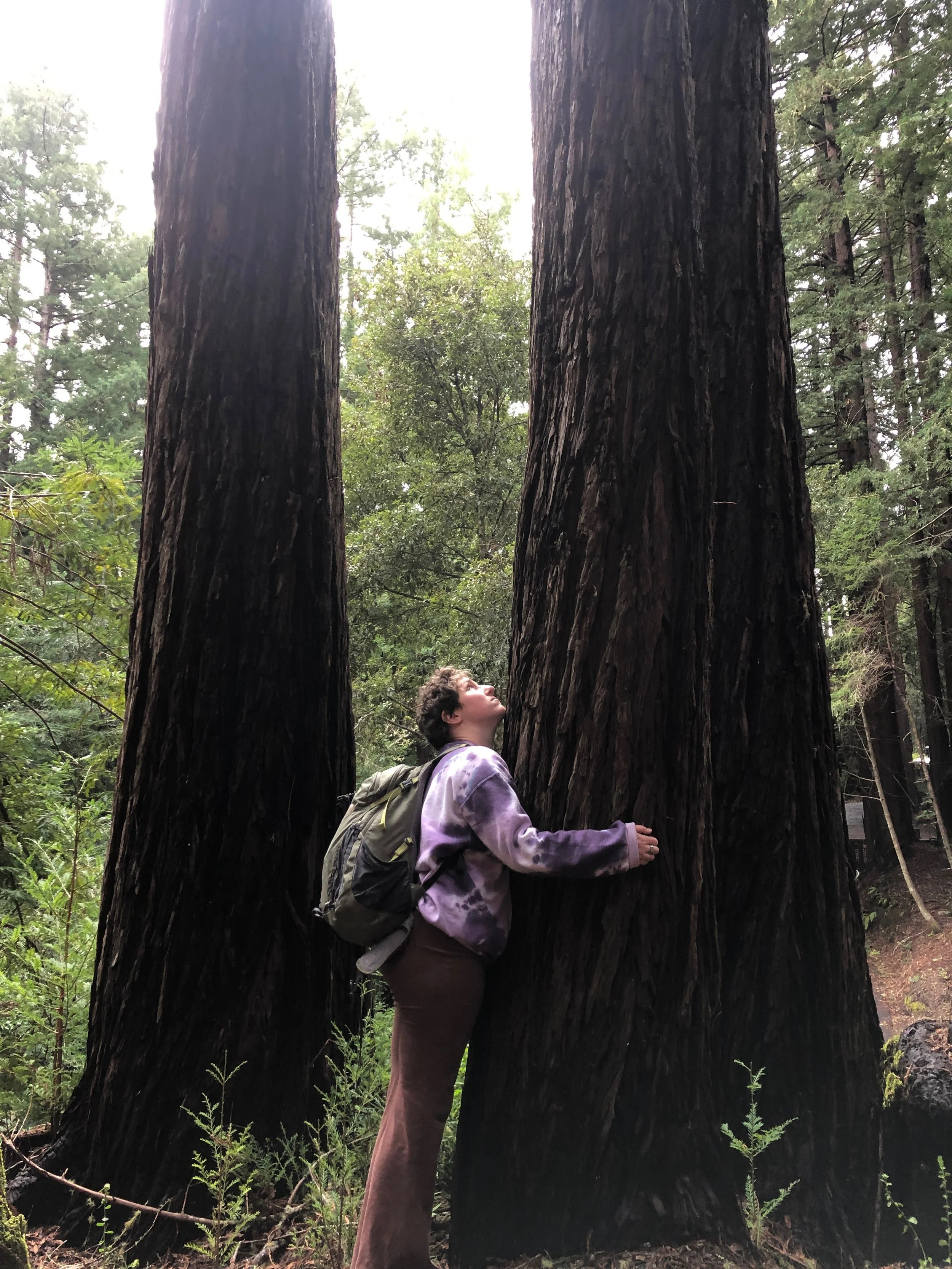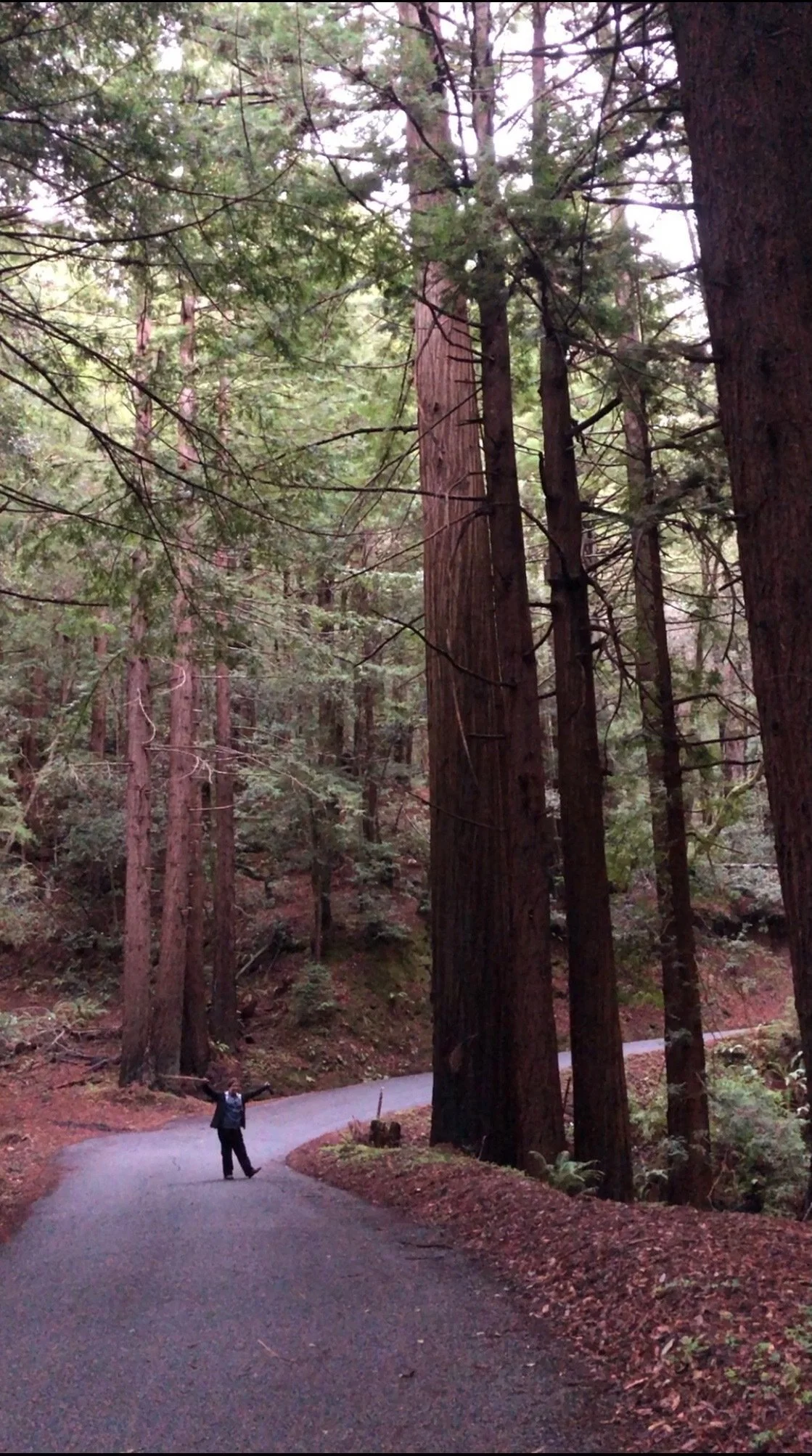Seasons of Healing
By Caroline Gibbons
It’s been four winters since I hit my head. The winter of that year could barely be considered a winter, though. On a warm San Diego evening, I hopped in my friend’s van and we drove to the surf. Around sunset I fell, and my new board slingshotted back, hitting my face. A series of dark seasons have followed that accident. At times, I’ve felt so far underwater that light began to fade. Since that day, I’ve been working on recovering from a traumatic brain injury (TBI) as well as chronic health issues that resulted from the accident.
Recently, on a warm end-of-winter day, I noticed a spiderweb-like substance beneath the melting snow. It looked gross and dirty. I was struck by the idea that as winter turns to spring, it reveals an ugliness that is just as present as the green of new tree buds and daffodils poking out of the ground. I was also surprised that I’d never noticed it before. I’ve always thought of the transition to spring as filled with beauty, chirping birds, and sunny days. But, at that moment, I thought of the pale mud before the ground dries. The dead deer that lay unceremoniously on the sides of highways, driven closer to town by their winter hunger. The piles of dog shit that are uncovered as the snow melts to slush.
Not everything is beautiful as winter turns to spring.
Last year, I chose to begin taking a new medication for depression, which had become unmanageable months after the TBI. Unfortunately, one of the common side effects of this medication is weight gain. Since then, I have gained over thirty pounds. Along with dramatic changes in physical abilities, like no longer being able to run and hike until my legs burn, it’s the first time in my adult life that I’ve experienced a dramatic change in my physical appearance.
Today, most of my pants no longer fit. I’ve had to relive the dreaded experience of pants shopping at an outlet mall. Reminiscent of high school growth spurts, I have returned to the dressing room lighting, the itchy unwashed denim, and the pants that don’t come up past my thighs. Recovering from a brain injury and losing my ability to do the things I love has been hard enough, but the loss of confidence due to the changes in my appearance often leaves me feeling discouraged about returning to the world and rebuilding a social life.
I’ve seen multiple doctors, naturopaths, a physical therapist, a chiropractic neurologist, acupuncturists, an herbalist, a hormone specialist, a sleep specialist, and multiple therapists since the injury. An urgent care doctor told me that it was all in my head and sent me away with a packet about adult anxiety disorder. I’ve been looked at incredulously by the sleep specialist, because he couldn’t believe that I was living on my own and had “so many things wrong with me.” (His words, but also mine.)
I’ve been given different timelines for healing by all these individuals, but each time the deadline arrives, I am still not better and left with more questions and doubts.
A friend recently reminded me that some fruit trees require multiple springs before they can produce fruit. Cherries, pears, and plum trees take years before fruiting. Many fruit trees require cross-pollination with different varieties of the same tree in order to reproduce as well. To me, this is reassuring.
The first time I truly felt hope after a year and a half of hopelessness was when I had a phone call with a physical therapist based in Park City, Utah. Out of a desperate need for healing, I moved to Utah with the hope that this physical therapy program could help me.
I’ve been here for almost three years now. Three winters have passed, and this upcoming season will be the first spring that actually feels like spring. The combination of healing modalities, positive thinking, self-compassion, walking, physical therapy, somatic therapy, time in nature, and medication has finally coalesced in a way that allows me to move my life forward in a tangible way. It’s the first spring I can go for a walk that’s more than a few minutes from my car, and work two days a week without completely crashing.
The first years post-injury, I didn’t long for more than what my life had to offer, because getting through each day took all of my energy and will. I couldn’t imagine ever doing more than eating, sleeping, and surviving the panic attacks and dissociation that came with the lack of sufficient blood flow to my brain. For a while I think my nervous system and brain were in such a state of survival that my mind’s ability to imagine a future for myself was impossible. Now, I can daydream about future plans and desires. (That’s why, this spring, I’m finally planning my move to Colorado to find more community.)
I wasn’t even able to want to do the things that used to bring me joy and make me feel alive. For a while, images of activities I could no longer do only came to me at night while I was dreaming.
I dreamed of snowboarding and sweating while on a run in the hot sun. I dreamed of skateboarding through the streets, and I dreamed of falling in love again. I knew I was beginning to heal when I started to long for experiences and craft future goals while I was awake, using my conscious mind. I began to realize that maybe life was still possible for me.
Now, I’ve gone snowboarding, skateboarding, and felt my muscles working as I hike slowly uphill. Though I now believe that life is possible for me, and I’m working toward specific healing milestones, my body is not as strong as it used to be. My confidence also falters often, because I know my whole world could shatter with the slightest injury to my brain or intricate nervous system.
Even though I’m getting better, it’s like peeling layers of an onion. As I gain the ability and confidence to get out into the world again, I have to do so with a new body, with different abilities. As I progress forward and regain skill and strength, I’m shown where my new weaknesses and insecurities are. My eyes get fatigued as I drive longer distances, my arms get shaky after a long walk, and my heart still hurts when I see a deer lying crumpled on the side of the road.
I used to get a lot of my confidence from being physically active and feeling strong. If I felt self-conscious about my body, I would go for a run, not to lose weight, but just to feel strong in my body. After the run, my legs fatigued and my skin red from exertion and sun, I would feel a renewed sense of accomplishment and confidence. Now, I have to deal with a body that is shaped differently and can’t move in ways it used to move with ease and lightness.
I haven’t been back to southern California since the accident, and I don’t know when I will go, but I have been to northern California where the giant sequoias live. I’ve walked among those trees in their damp, fern-filled understory.
These giants do not release their seeds to create new growth every year. Their cones are serotinous. They wait.
In biology, the term “serontinous” refers to a process that is delayed, or late. It often refers to plants that flower later than normal, or in this case, pine cones that remain closed only until a forest fire triggers the release of their seeds.The cones of these sequoias are serotinous. They remain tightly locked, sometimes even for decades, until wildfire season arrives and heat scorches the forest. Then, when the heat from the fires dries out the cones, their time has arrived.
The seeds are released, and new life can begin.
Since I started my recovery, not every season has propelled me forward. Many have felt slow and stagnant like I’m stuck decomposing in a pile of mud. When I feel this way, I want to remember that fruit trees need years before the rewards of their slow, internal labor come to fruition. That the giant sequoia sometimes needs the earth to be scorched in order to reproduce and thrive. I hope to allow each season to be what it has to be, to learn from the lessons nature has to provide, and to trust that my world is always changing, sometimes fast, sometimes slow.
Does a sequoia know when the next wildfire will come? Does she brace for impact? Does a peach tree know when there will be enough cross-pollination and time passed for her to bear fruit?
I have to think that she doesn’t. However, she does not sit still. She continues drinking water, growing roots, strengthening her trunk, and photosynthesizing. She does not wait for the fruit to come, but, boy, when it does, I know it will taste so sweet.
Caroline Gibbons is a musician, writer, and brain injury survivor with a love for being in nature and amongst community. She has two cats that she adores. Get to know Caroline and her writing more on her Substack.

